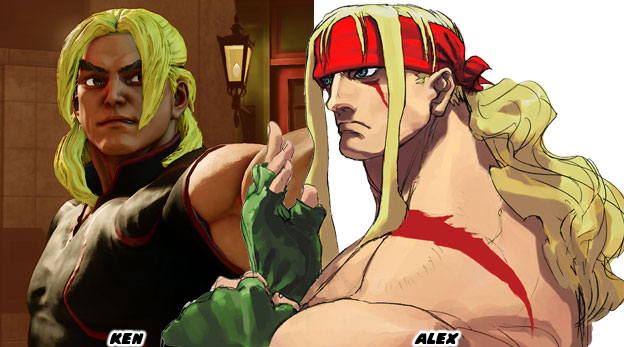
Of course the people that are complaining about his long hair may fail to address that this character has always had long blonde hair. In fact this is the second major makeover for the character. In Street Fighter Alpha / Zero, he had much longer hair and in a ponytail. The decision to present a young Ken and Ryu in the series was based in part on the designs used for the Street Fighter II anime movie. Most fans enjoyed the look so long as Ken was still a fun character to play as.
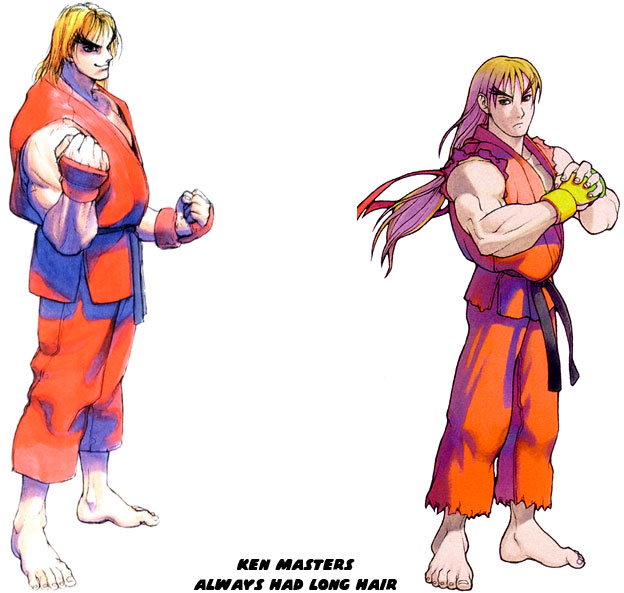
The other major complaint is that the model in the trailer is ugly. The hair itself looks like it was sculpted out of Play-doh. I'd actually like to remind critics that these are Beta and possibly even Pre-Alpha models going into the teaser trailers. The character is still months and months away from being finalized. In case these people forgot the early footage of Street Fighter IV caused the same reaction from many gamers. Ryu was ugly, as was Chun-Li. Their heads were odd, their proportions were funny. Their hair looked like blobs of colored clay. On and on people complained while the game was still being developed. Many wrote off the series then and there. They should have stuck around a bit longer because from month to month the models changed greatly. I can only assume that the same thing is going to happen with Ken and the rest of the cast. Also for the people that dropped the series while it was still in beta were not really missed. The over 8 million copies of the Street Fighter IV series sold helped single-handedly revive and entire genre with the masses.
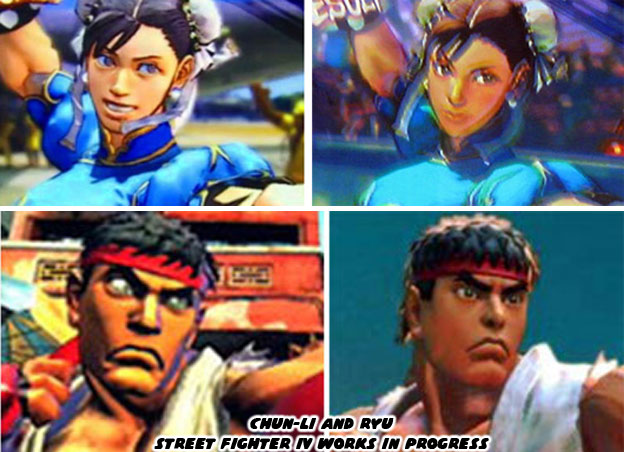
I'll hold my judgement on Ken until he is finalized. I'm already not happy with what the studio did with Birdie but that's an entire series in and of itself. Right now I am sitting on the fence regarding the redesign for Ken. Like many long-time fans of the genre I can point out what the issues are. First and foremost the character is part of a legacy design going back to the start of the genre. And I'm not talking about the first Street Fighter either. I mean a game even older than that!
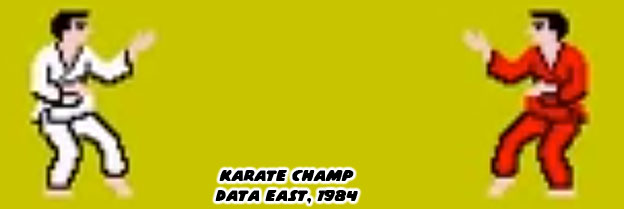
The karate guy in the white uniform versus the karate guy in the red uniform was a tradition started by Data East over 30 years ago! There were a couple of reasons why the characters were presented this way. First off the uniforms could have actually been worn in competition. Secondly the red uniform was a good contrast because two characters wearing white would be difficult to track as they jumped toward each other. It made a lot of sense for programmers that had to use two main karate fighters in a game. It would become a tradition that other studios would follow.
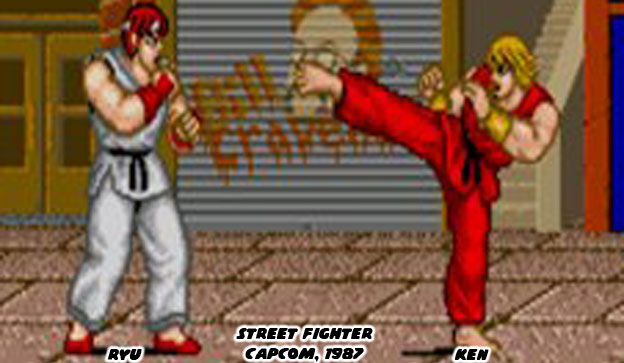
Capcom pretty much set the standard a few years later with the original Street Fighter. Since the game engine was running on the CPS-1 board the sprites were larger and supported more colors than what was possible earlier. They used these extra colors to add some details to the characters. Ryu had reddish hair, red punching gloves and red slippers. Ken had blonde hair and gold punching gloves. These details would become standardized for both characters over the next 25+ years.
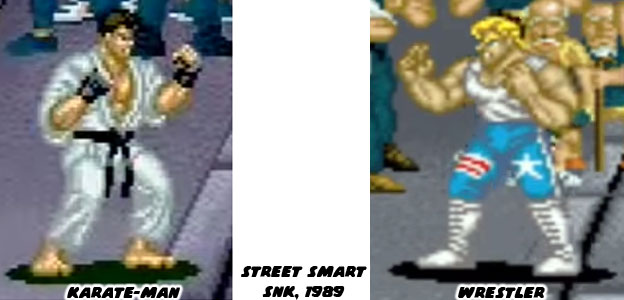
As more developers began creating fighting games of their own they started out with two main characters. They were almost always a Japanese and an American because that was the two biggest markets the industry was focused on. The Japanese was usually a karate fighter and the American was also a karate fighter or some sort of wrestler. SNK had experimented with the formula since early on. Such was the cast with Street Smart. A game that was a hybrid brawler and fighting game.
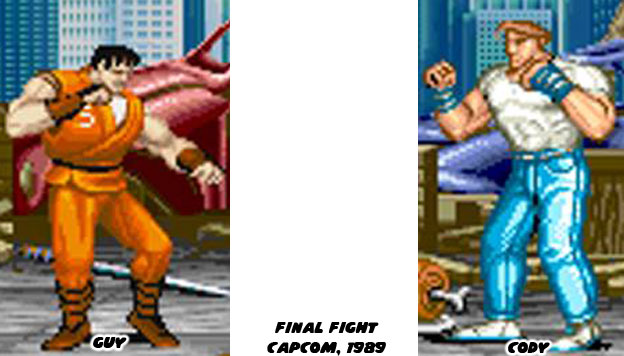
That same year Capcom also released a title that was a hybrid fighting game and brawler. Final Fight was designed as the sequel to Street Fighter. What was interesting was that the uniforms for the main characters were reversed. The American wore white and the Japanese wore red, well actually a burnt orange color.
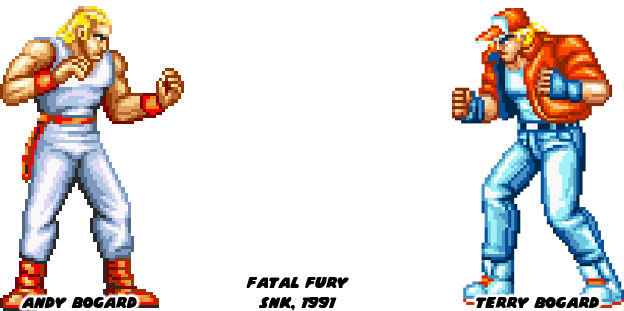
And so the trend continued through the years. In 1991 Capcom released Street Figher II and updated the look of Ryu mostly. Ryu had dark hair and lost the slippers. Ken more or less stayed the same. The other developers were keenly aware of the trends and had also released their own fighters. The closest one on the calendars was Fatal Fury, which was produced by the planner on the original Street Fighter. The main colors remained on the characters, red and white yet this time they were brothers. Also SNK began inserting more contrasting colors and even secondary colors to all of the uniforms. This would be a trend that made the SNK library appear much different.
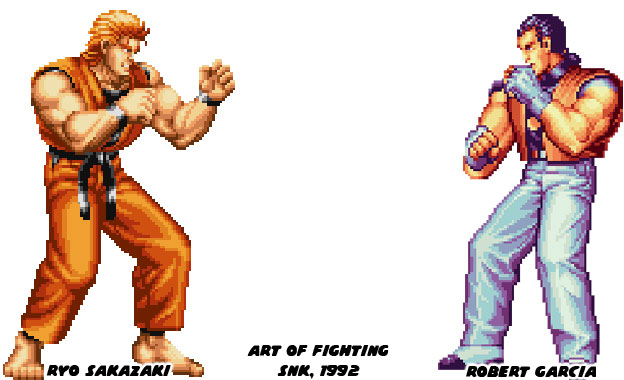
A year later SNK released the Art of Fighting. Again the colors were reversed on the main characters, except this time there was more diversity. Instead of a blonde American, the second player was a black haired Italian. I'm sure many audiences noticed that while Ryo was very much an amalgamation of Ken and Ryu, his uniform had a distinct black vest under his gi. This was something that would return for Ken in Street Fighter V.
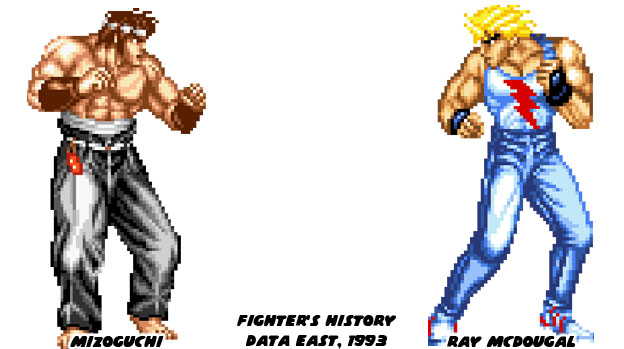
The following year was a major period for the evolution of fighting games. Three titles were released that each shaped the course of history. Data East finally returned to the genre they created with Fighters History. From the neck up the two main characters were very much identical to Ken and Ryu. The rest of the cast was even similar to the World Warriors in Street Fighter II. So much so that Capcom sued Data East for copyright infringement. Capcom would lose the case which allowed other studios to release games and characters very similar to Street Fighter.
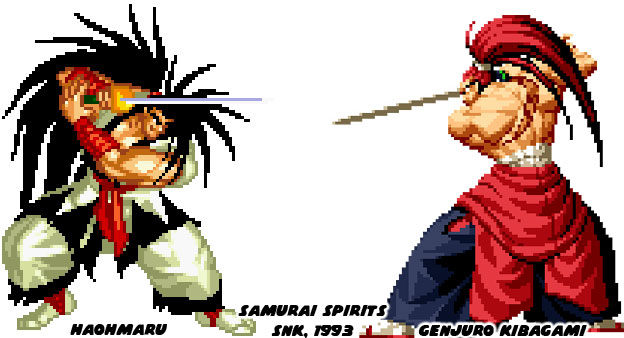
SNK would return with one of the most popular weapon-based fighting games of all-time. Samurai Spirits came out in 1993 and introduced Haohmaru. However he was without his balance until the sequel came out. Genjuro was very much the Ken to Haohmaru's Ryu, although technically both were Japanese.
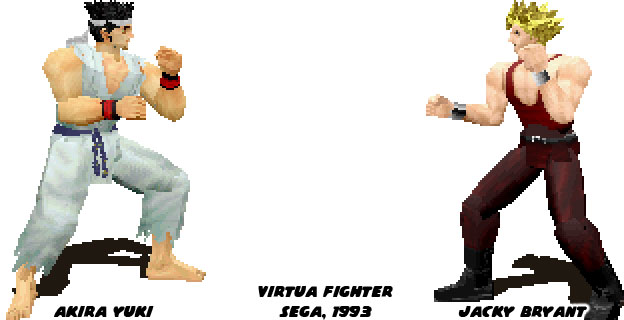
The most revolutionary title of '93 was Virtua Fighter by Sega. It was the first 3D fighting game. Yet despite all of the advances with graphics technology the main characters were still a Japanese and blonde American wearing white and red respectively.
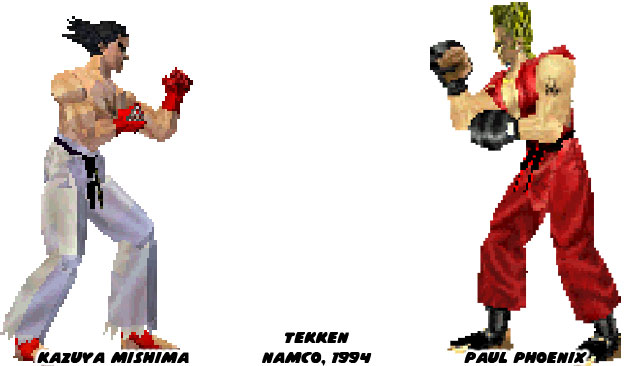
A year later Namco released their first entry in the 3D arena and surprise-surprise there was a Japanese protagonist wearing white and a blonde American in red. Of course any similarity between Ken and Ryu to Paul and Kazuya was superficial. The Street Fighters and the Tekken games had different control schemes, different combo setups and altogether different gameplay elements. The biggest franchises, at least those that came from Japan kept the tradition alive for a generation. Red and white costumers were done because of technical limitations originally. The early arcade engines only had enough memory and processing power to display a few colors at a time. Characters had to be painted in broad single colors. As technology improved so did the ability to display dozens and then hundreds of colors on screen. Even then developers learned that the most memorable characters preserved a single main color. This was most obvious in Street Fighter.
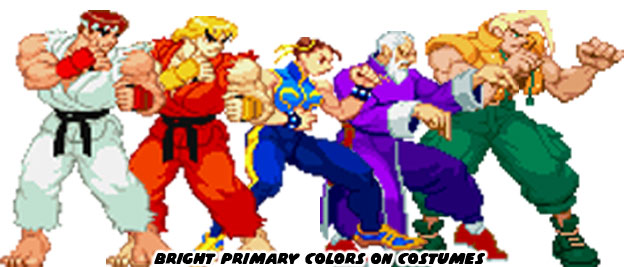
Let's play some word association. What is the first color that comes to mind when you think about these characters: Ryu, Ken, Chun-Li, Gen and Charlie Nash? Chances are you would think white, red, blue, purple and green. Think about every Street Fighter character and how you could pin a color to them, Sean was synonymous with yellow, Blanka was green and Makoto was white. Costumes or uniforms with a solid color were easier to track on the screen than a character with busy patterns on them. This worked in traditional animation, in comic books and just about everywhere else where you wanted to grab the attention of the audience. If there was one thing that Capcom had relied too much on over the past 30 years was that certain nationalities were stuck with the same colors.
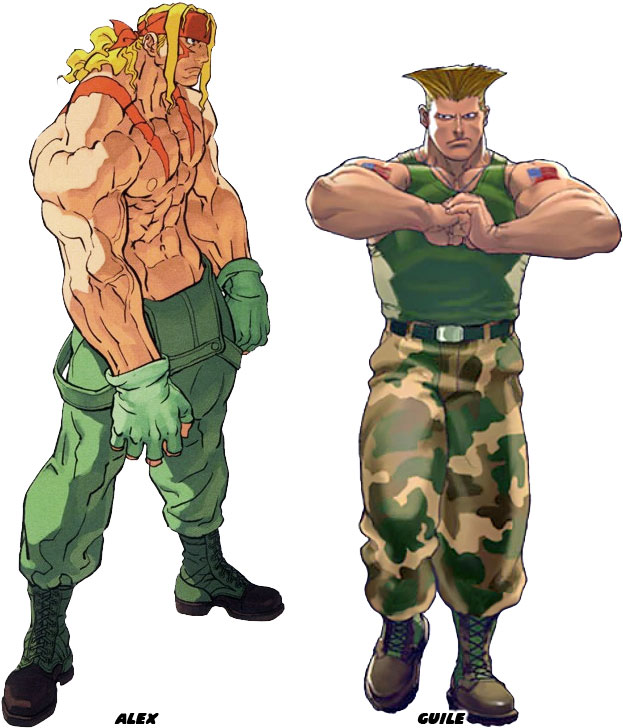
It was not a hard and fast rule but audiences around the world were expected to identify the American character because they were white with blue eyes, blonde hair and military themes. Costumes started to become a little heavy handed with social bias. Japanese characters that were not wearing a gi were sumo wrestlers. Black fighters were mainly boxers and on an on. This started to wear a little thin with audiences. They wanted to see some more original ideas. If not more diversity then perhaps costumes that would make the characters look a little more contemporary. The only down side was that Street Fighter had gone unchanged for such a long time that giving a main character with a completely new look was going to make a lot of players mad. Capcom found a nice middle ground by offering DLC costume packs which offered everything from actual street clothing to animal costumes. However Street Fighter V was a completely different approach to the genre and because of that some of the returning characters would not be the same. In the next blog we will take a closer look at the new Ken. As always if you enjoyed this blog and would like to sponsor me please visit my Patreon page and consider donating each month, even as little as $1 would help make better blogs and even podcasts!

You forgot Reiji and Keith from Power Instincts as well as Eiji Shinjo and Kayin Amoh from Battle Arena Toshinden
ReplyDeleteRight you are Monkwolf, wow those were some obscure characters. I actually have a Power Instinct manga from Japan.
DeleteI know i'm years late with this but I have more.
DeleteBilly and Jimmy Lee (Double Dragon)
Hanzo and Fuuma (World Heroes)
Kyo Kusanagi and Iori Yagami in a sense. :)